Roland V-Drums TD716 – The Best e-Drum Kit Ever?
If you want the best, you have to pay for it...
Roland’s new flagship V-Drums kit, the TD716, redefines the e-Drum experience, aided by the stunning V71 module. Here is my review.
Roland V-Drums TD716 – The Highlights
- Stunning build quality
- Digital Snare, Hi-Hat and Ride offer amazing detail and nuance
- V71 Module is the best sounding, most tweakable V-Drums module yet
- Wireless connectivity and Roland Cloud integration make for almost limitless possibilities
Roland V-Drums TD716 Review
How Did We Get Here?
I distinctly recall seeing a Roland V-Drums kit for the first time. I’d made my weekly trek to Academy of Sound, a long-gone chain of music stores here in the U.K. My local store in Norwich was quite a large one and I’d regularly visit to play around with (and ultimately be sold a ton of) synths.
But at the time, I was drumming in a minor league pub covers band and was raising a few eyebrows in the pubs and clubs around Norfolk with my little Yamaha DTXpress e-Drum kit. Back then, this was pioneering stuff on that particular circuit, where authenticity was key. Here was someone breaking with tradition, and people were perplexed!
The year was 1997, and as I walked into the store, there it was. The Roland TD10, its chromed shells glistening under the spotlights. It was a bit of a moment, I can tell you. On closer inspection, the mesh heads were revelatory, looking and feeling way more realistic than the rubber pads I was used to.
Everything about it exuded class and quality, and that initial play had me sold. That was until I saw the price tag! The drop in my enthusiasm plummeted so far that I almost got the bends! On my meagre salary it was instant unobtanium. I couldn’t even cover monthly payments with the money I was making in the band. I left the store, dreams shattered.
What Has Changed?
Here we are, 28 years later (no zombies), and a lot has changed in the e-Drum world. But what hasn’t changed is the fact that Roland is, almost without question, still the market leader, and V-Drums are still rather pricey! But what HAS changed is the technology, and Roland’s latest flagship kit, the TD716, is positively overflowing with it.
Spending time with the TD716 has, after all this time, made me realise that the price tag, whilst steep, is justifiable. You simply don’t get anything as good as this for much less money. I agree that there are plenty of alternatives, but the TD716 is the full package in every sense.
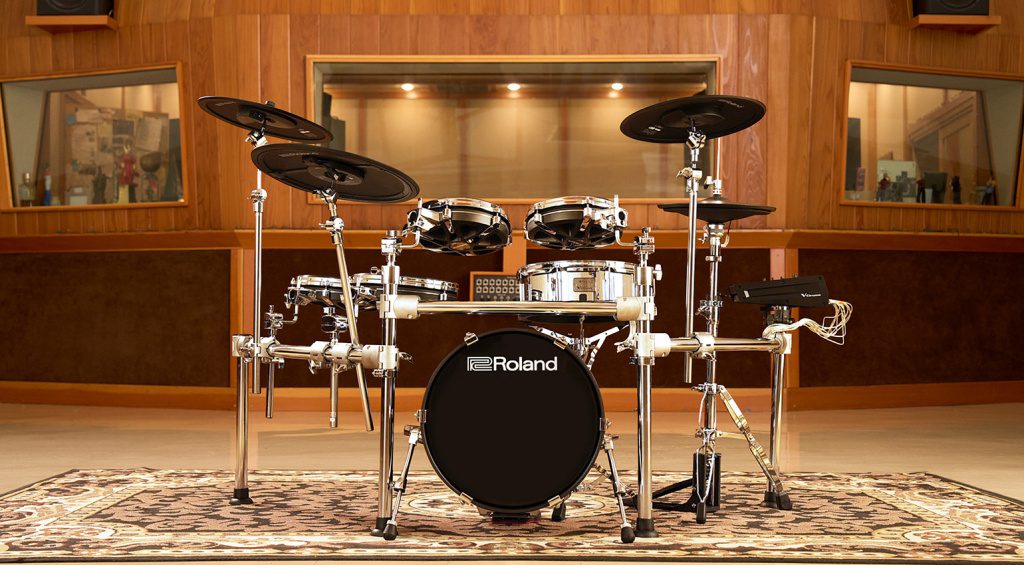
Introducing the Roland TD716
Let’s start by doing a checklist of what you get for your money with the TD716:
- 1x KD-18-BK Kick Drum
- 1x PD-14DSX Digital Snare
- 2x PD-10X Toms
- 2x PD-12X Toms
- 1x VH-14D Digital Hi-Hat
- 2x CY-16R-T Crash Cymbals
- 1x CY-18DR Digital Ride Cymbal
- 1x V71 Module
- 1x MDS-STG2 Stand inc. all pad and cymbal hardware
What you don’t get is a snare stand, a Hi-Hat stand, a kick pedal and a throne. I’ve always bemoaned the lack of these things, especially in premium kits, but I also appreciate the fact that all four of these items can be deeply personal in terms of taste and performance. It’s not like many purchasers of the TD716 will be beginners starting out afresh.
Let’s now take a look at all this, starting with the stand.
The MDS-STG2 Stand
Consisting of four vertical legs and three gently curved cross-members, the TD716 stand is weighty, solid and sturdy enough for any kind of gig. Once set up, this thing, and everything attached to it, is going nowhere. Every clamp that joins the sections together is reassuringly chunky, with spring-loaded tightening bolts.
The clamps for each pad and cymbal are equally well-made and attach and detach simply, quickly and quietly. For the drum pads, each one has a ball-jointed spike with solid clamps and is incredibly easy to set up for your desired playing angle.
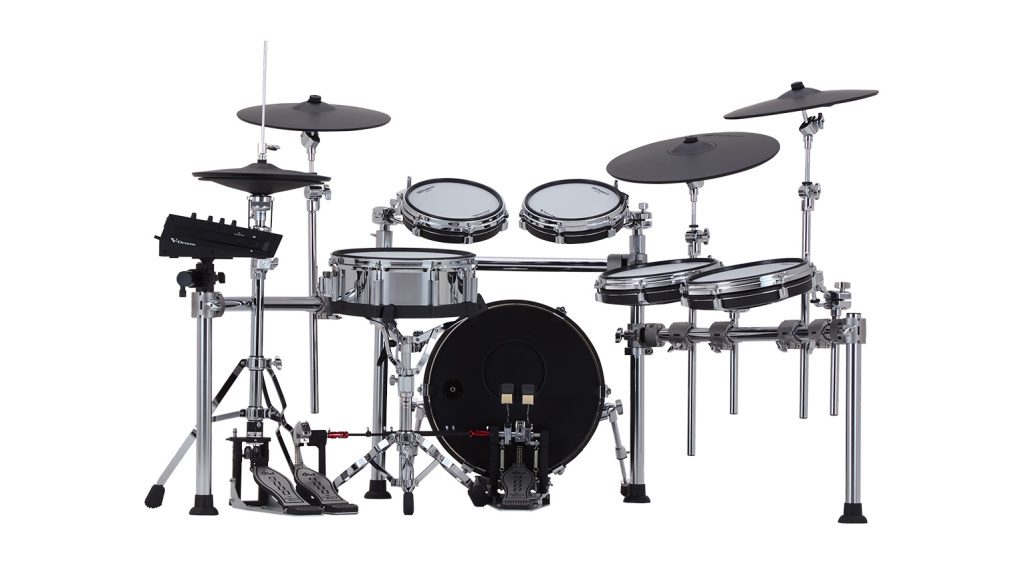
Equally, the cymbal holders are just as ingenious and robust. These telescopic arms allow for an almost infinite variety of positions, and the ball joints ensure you can achieve your specific angle of attack.
Finally, the V71 itself is securely mounted on its own extension arm with enough scope to accommodate your positioning needs.
The PD-14DSX Digital Snare
For me, this drum pad was very much the star of the show. I’ve never played an electronic snare so responsive, detailed and nuanced as this. The level of detail across the head is staggering (16,000+ velocity variations), and it picks up and interprets every style of play, from the lightest touch to the heaviest whack!
The rim is cleverly recessed so as not to intrude, and it ultimately feels very natural because of that. It even features automatic hand detection. But the real cherry on the cake is the “snare tension lever”. Who knew such a simple idea would be so effective? This device, which accurately mimics the snare tensioner on a real acoustic drum, is all of that and so much more.
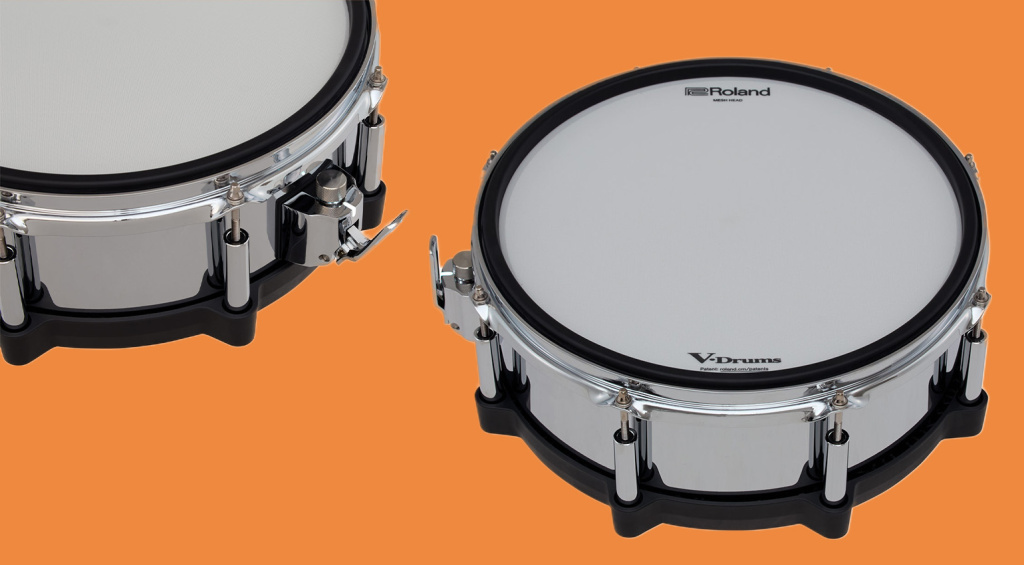
At its simplest level, it functions as, wait for it… a snare tensioner! Ok, so there are no snares on an electronic snare, but there ARE a multitude of snare samples, each replicating different snare settings, and by using the knob and the lever, you can easily dial in your preferred tension.
If that were its sole function, that would be pretty neat. But Roland saw the benefit of an additional on-kit control, which allows you to assign a whole wealth of settings to this device. The strainer knob can be assigned to any assignable function within the V71 module. So simple. But so clever. Bravo, Roland. Bravo indeed.
The VH-14D Digital Hi-Hat
When it comes to detail and nuance, the Hi-Hat is the one part of a drum kit where those two things are really important. The ability to track position, velocity and capture every stick hit and hand mute is essential in recreating a real hi-Hat performance. Roland’s digital technology does just that.
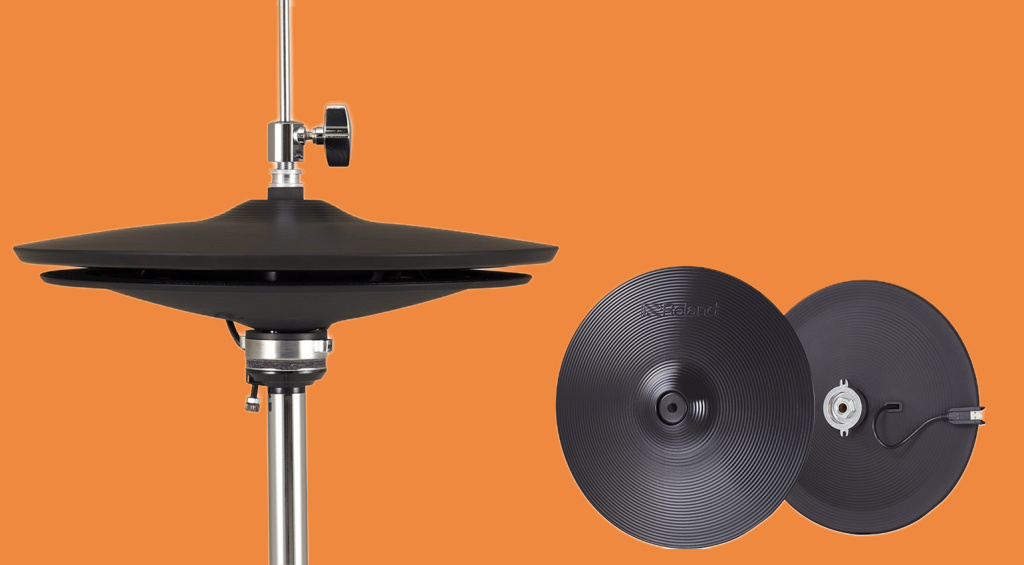
Multiple sensors across both pads deliver this detail with unwavering accuracy. I’ve never played an electronic Hi-Hat that makes me feel like I’m playing the real deal as much as this before. Of course, all of this detail would be wasted when not married up to something like the V71, or a plugin such as Superior Drummer.
I may use this term frequently in this review, but the experience is revelatory. Couple this Hi-Hat with the stand of your choice, and I swear you and your audience won’t be able to discern the difference.
The CY-18DR Digital Ride
Rounding off the digital pads in the TD716 kit is the 18” digital ride cymbal. It’s the final obvious candidate for the accuracy and detail that digital technology can provide. It’s the one cymbal, outside of the Hi-Hat, that is played in a variety of ways.
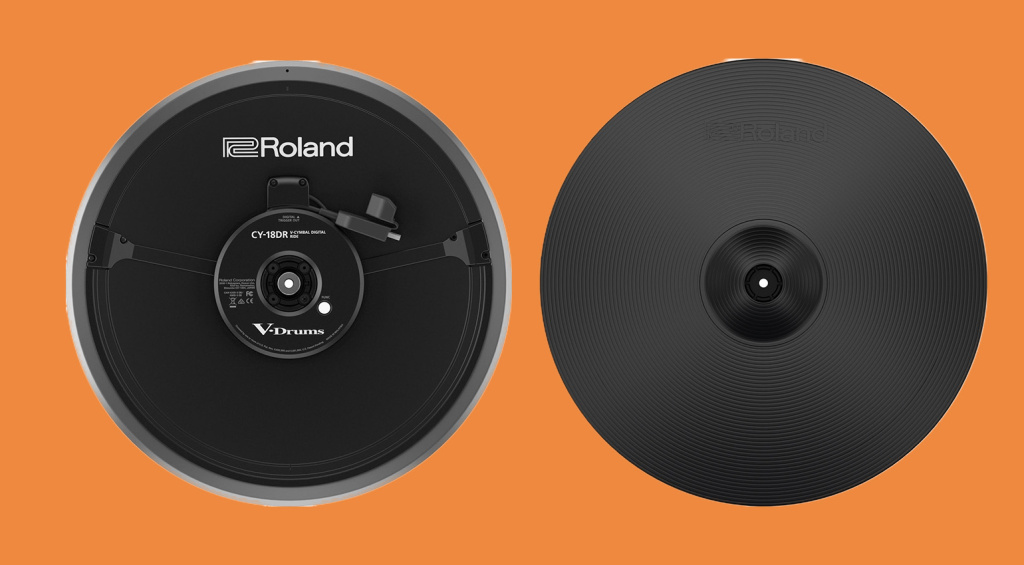
And as you will have come to expect, the CY-18DR handles all of this with aplomb. It can pick up every detail of performance, be it on the rim, bow or bell and can recognise muting techniques from clasping the edge to dampening with a finger. It even allows for natural carryover decay.
As with the other digital pads, it comes into its own when married up to a detailed sound source, be it Roland’s own module or a software plugin hosted on a computer. Even the mount allows the Ride to physically behave in a realistic fashion.
The KD-18-BK Kick Drum
Some people say that having a full-size, full-depth kick drum on an e-Drum kit is overkill and exists merely to cater for the stage presence it offers. I’d be inclined to agree to some extent, but there’s also an argument for stability, feel and possibly more accommodating for those of us who use double beaters.
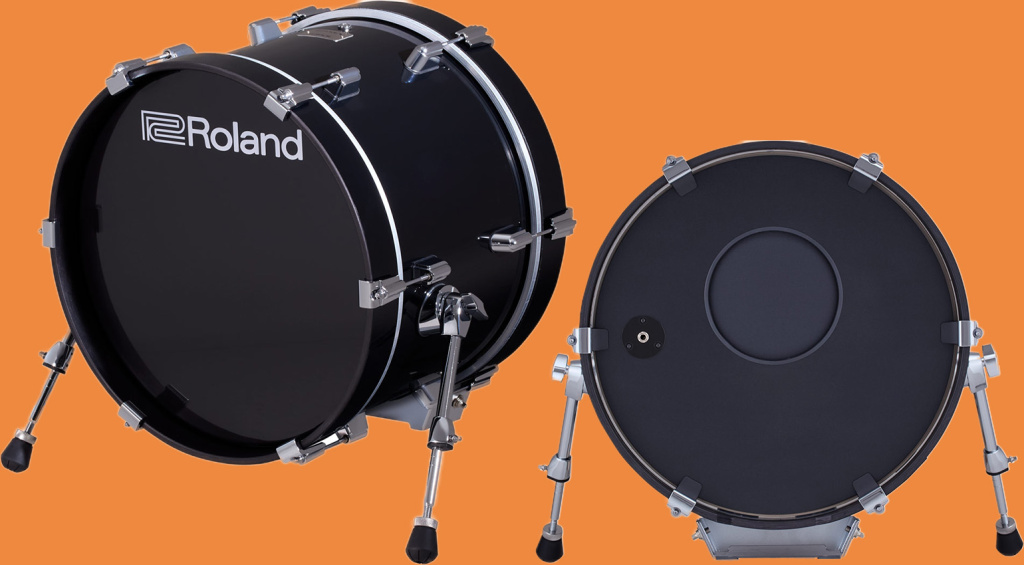
Maybe it’s just Roland trying to justify the premium price, but it definitely felt nicer to play when a smaller pad. And yes, I will admit that this was likely down to some sort of confirmation bias that bigger is better! Either way, the KD-18 is a solid centre piece that delivers on all of the above. For some, it might be all the justification they need to not buy the VAD716 kit with its full-size shells across the board.
The PD-10/12X Toms & CY-16R-T Crash Cymbals
So yes, I’ve left the least compelling elements till last. The two pairs of toms supplied with the TD716 are, as with all of Roland’s tom pads, simple, functional and eminently playable. Like all the drums in this kit, the mesh heads are able to be tensioned to suit and all feature playable rims.
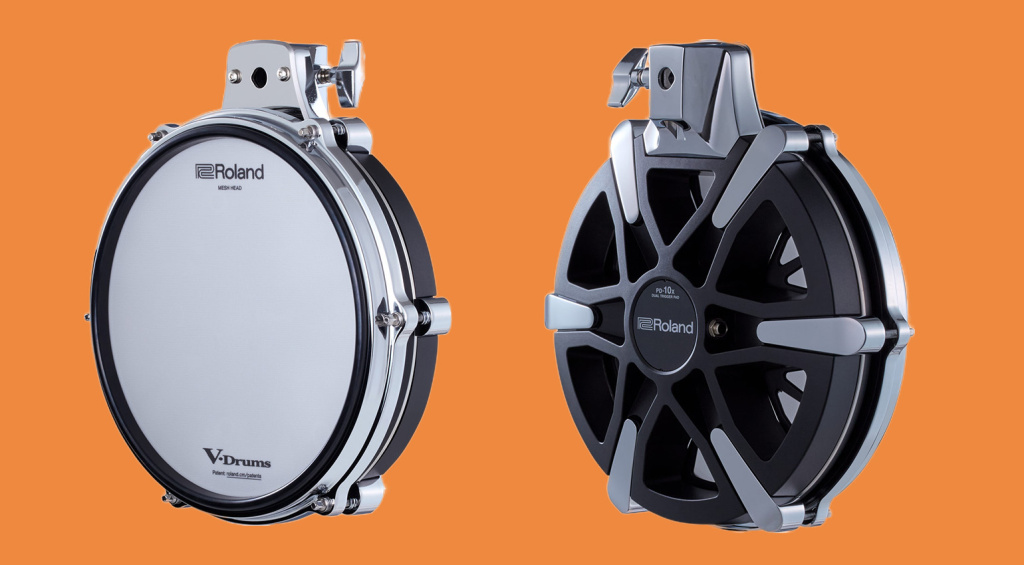
They have a nice weight and solidity to them, and the multi-position sensors do a fantastic job of delivering the nuance in tone when playing from the centre out to the rim. Not once did I get any cross-talk from the triggers when playing between the rim and the head.
Similarly, the CY-16R-T’s are just as responsive with built-in three-way triggering. However, when used with the V71, only the bell and edge respond. They are also cholkable. These cymbals are thinner than previous iterations and therefore benefit from that lightness and movement.
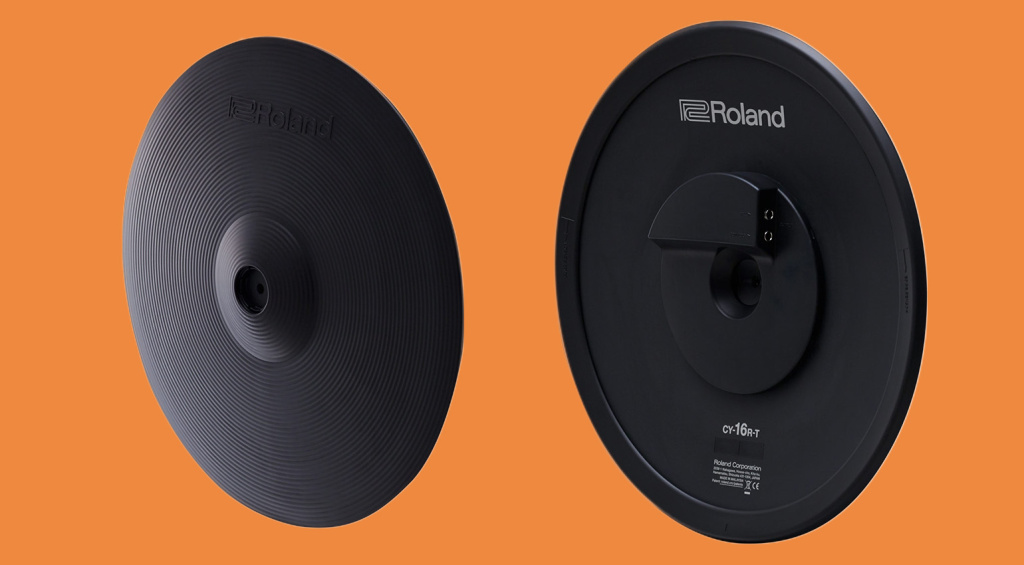
Playing swells on these is, as you’ve come to expect, very realistic and satisfying and requires little to no adaptation from an acoustic playing style. As always, how well these hardware features work depends on the sound source they are connected to. In the case of the V71 module, these perform brilliantly.
The V71 Module
And what of the V71 module, the brains and heart of the TD716 kit? Well, I think it is safe to say that this is, without doubt, the best Roland V-Drum module they have ever created. It is the most expansive, expandable, configurable and intelligent unit that has ever graced a V-Drum kit, and finally puts to bed the oft-held belief that Roland drums sound a bit artificial.
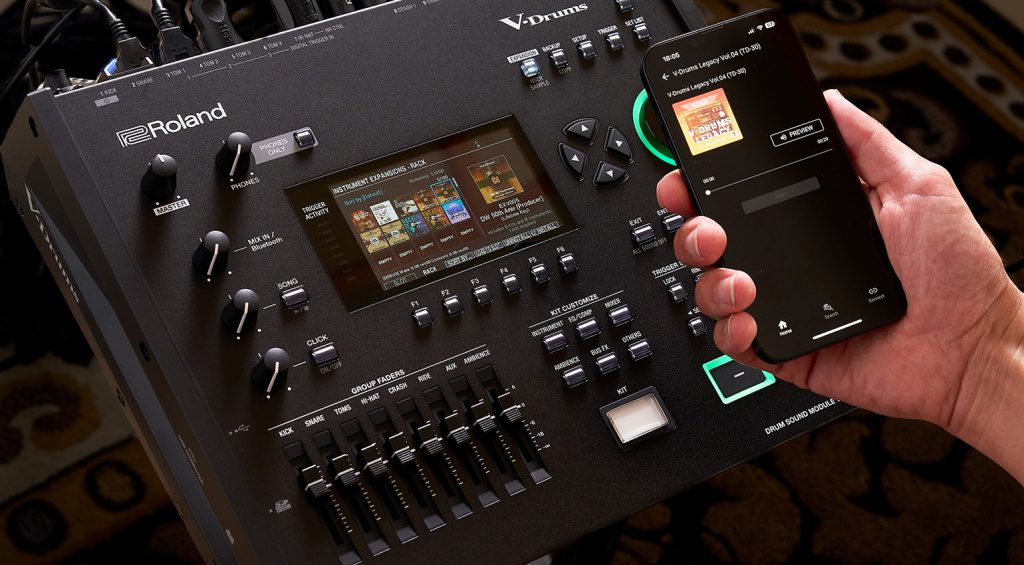
Much of this may well be down to the fact that Roland acquired DW Drums a short while back, and with their drum library expertise, Roland now finally has a fantastic source of drum sounds. Deeply multisampled in collaboration with DW, the V71 also benefits from full Roland Cloud compatibility.
Users can now buy new, additional kits and expansions through the Roland Cloud Manager application, and wirelessly download them straight to the V71. It even allows for control of such downloads via a mobile device. And if you fancy editing your drum sounds on a computer rather than on the module, you can do that too. Your new TD716 will come with six months of Roland Cloud subscription included.
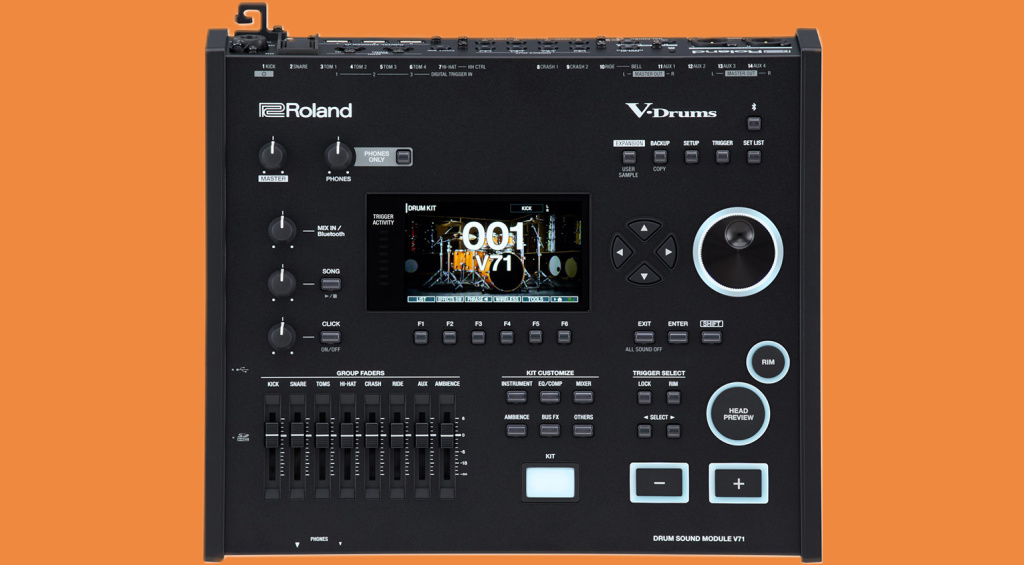
The display is large, bright, colourful and informative, although a touch screen might have been a nice touch. That said, the overall navigation is good, geared as it is to being used by a drummer throughout a gig. The nomenclature is clear, the important buttons are sufficiently big and illuminated, and the faders are nice and smooth.
Connectivity on the rear is, as we have come to expect from Roland, numerous and extensive. There are 8 balanced direct outs, two pairs of master outs (XLR/TRS Jack) and a stereo mix-in port. There are also twin headphone out connections at the front, 1x 6.4mm, and the other 3.5mm.
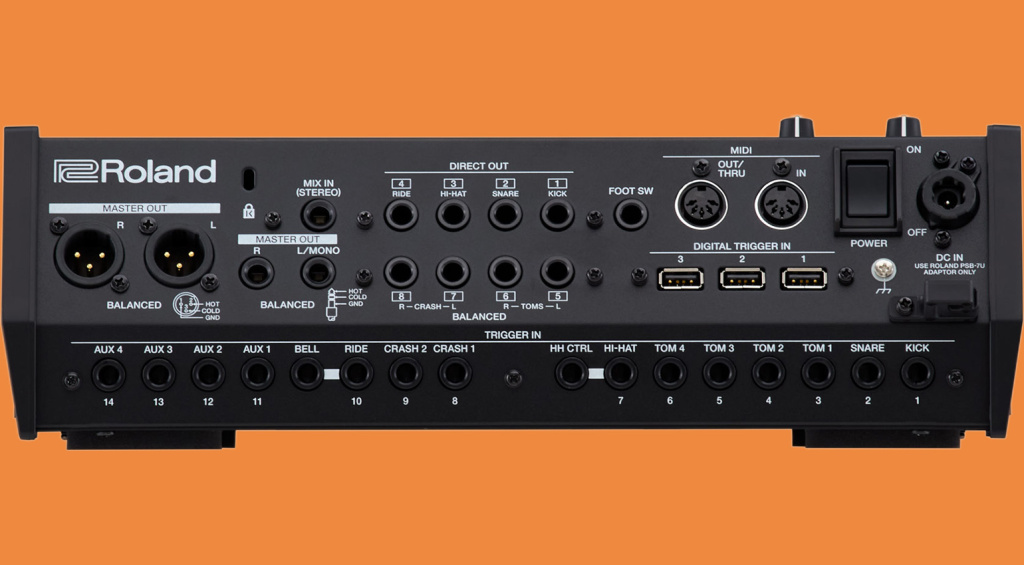
The three digital pads have their own USB connections with 14 6.4mm jacks for all the other pads, including four additional AUX connections for adding more pads. On the left side, there is a USB-C port for connecting to a computer as well as an SDHC SD card slot for saving and loading kits and importing your own samples. There’s also Bluetooth audio and MIDI for a truly wireless experience.
For studio work, you can make use of the V71’s built-in audio interface that delivers 32 discrete outs over USB, as well as MIDI! Put simply, it’s the most versatile and best-sounding V-Drum module that Roland has ever made and, for the first time ever, made me question whether I need my MacBook and a copy of Superior Drummer anymore!
In Conclusion
Roland’s flagship kit has never been this good. It is available in three different flavours: the TD716 reviewed here, the TD713, a smaller footprint version of the TD716, and the VAD716, which utilises Roland’s beautiful full-depth drum shells. They are all centred on the V71 module, so the choice you have to make is one based on size.
There is a reason why Roland’s V-Drums are priced where they are. It is because they are the best built e-Drums, the most accurate playing experience and now, the most versatile module available today. The TD716 is a kit at home equally on stage as it is in the studio, and is robust enough for the rigours of gigging.
Aside from the fantastic feel and detail of the digital pads, the V71 was a revelation and quite simply the best drum module I’ve ever used. The fact that it fully embraces wireless connectivity with the Roland Cloud is so useful, and this now means you have access to a range of superbly sampled DW kits too!
Being able to plug the V71 into my Mac and have 32 independent, discrete drum inputs right there with no messing around was fantastic. I think that the highest praise I can give the TD716 is that moving back to other kits was a real jolt and not a nice one at that. Everything else feels… less.
Pros and Cons
Pros
- Built to last
- The detail in the digital pads is incredible
- Snare tensioner and throw off a super useful addition
- V71 sounds are incredible and the scope for tweaking is huge
- Being able to upload new kits wirelessly is a huge bonus
- DW kits sound fantastic
Cons
- Inevitably, the price.
- A few more Aux trigger inputs would have been nice
- No Hi-Hat stand, kick pedal, or snare stand included
- Some might baulk at having to pay extra for a Roland Cloud subscription to reap the full benefits of additional kits
Pricing and Availability
If your budget allows, buy a TD716. If it doesn’t, speak with your bank manager. Our affiliate partner has the three kits and the module priced as follows:
- TD716 – €7,999.00
- VAD716 – from €8,888.00 (Multiple shell colours available)
- TD713 – €6,399.00
- V71 Module – €2,599.00

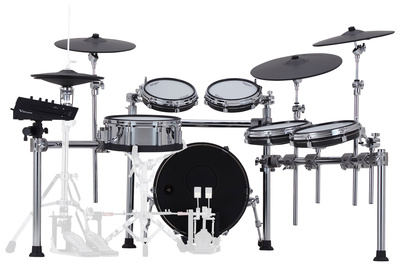

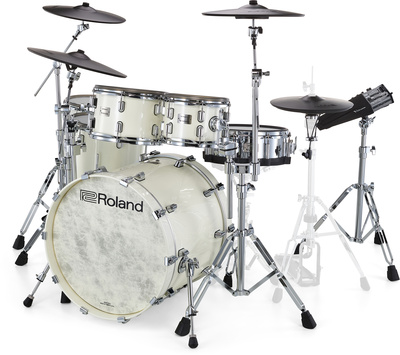

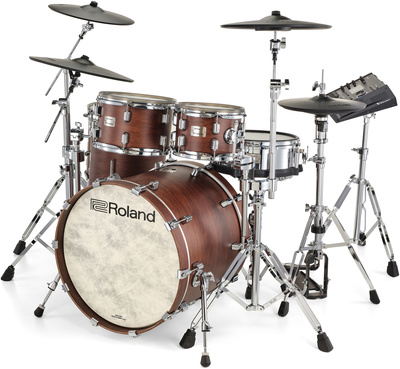

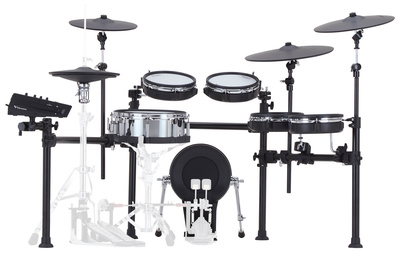

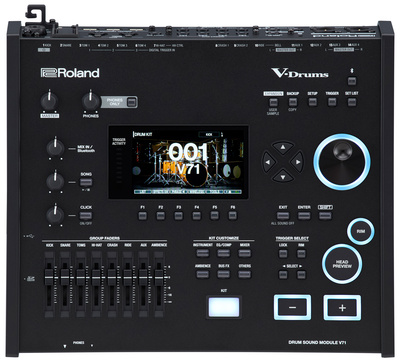
More Information
*Note: This article contains promotional links that help us fund our site. Don’t worry: the price for you always stays the same! If you buy something through these links, we will receive a small commission.
3 responses to “Roland V-Drums TD716 – The Best e-Drum Kit Ever?”

 4,6 / 5,0 |
4,6 / 5,0 | 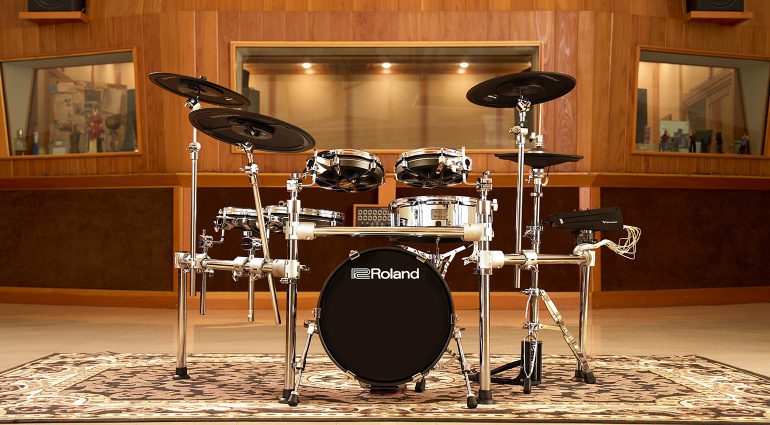


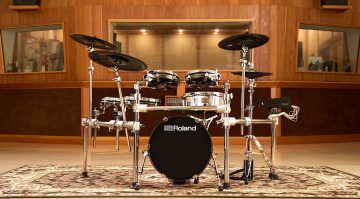


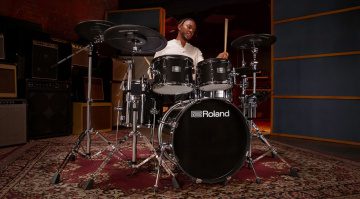

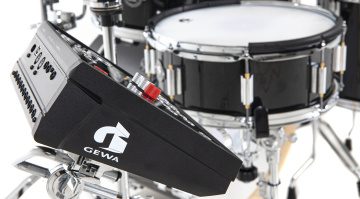

The VAD507’s TD-27 module, paired with identical digital snare, hi-hat, and ride, delivers 95% of the VAD716’s performance for significantly less cost. The VAD716’s TD-50X, extra cymbal, and larger kick are overkill unless you’re a studio pro needing advanced sound design or a larger stage presence. For most, the VAD507 is the practical choice, with savings better spent on accessories like the Roland RDH-120A hi-hat stand or Tama Iron Cobra 900 pedal.
The VAD 716, along with the TD716 and TD713 all use the new V71 module, not the TD-50X. The V71 is vastly superior and has dramatically improved sounds. It’s all there in the review 🙂
I’m perplexed that you think having a second crash is “overkill“, but I guess that’s all down to personal preference. At the end of the day, you buy the kit that best suits your needs. You do you.
Heard someone play these at an MMA event. Rockin!